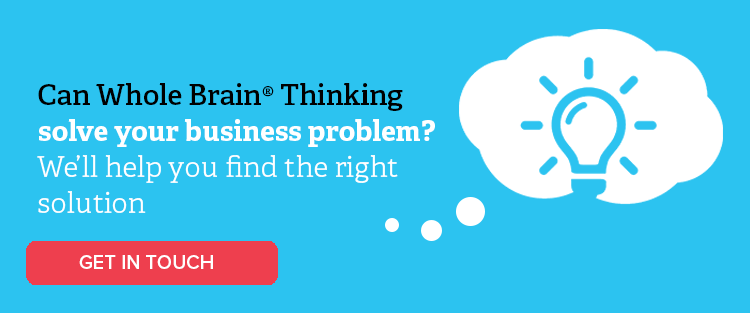From how we fly our planes to how we order our pizza, Artificial Intelligence (AI) and machine learning are transforming how humans experience their everyday lives. Across industries of all kinds – aviation, finance, healthcare, even the creative arts – AI and machine learning is optimising business operations and informing business decisions.For the most part, this transformation means better and safer business processes and outcomes. Take, for example, the average Boeing flight, which involves only seven minutes of human-steered flight. Or American Express, which relies on machine learning algorithms to detect fraud. There’s Inversion, an AI-powered tool that helps save lives by reviewing hundreds of radiology scans every day to detect cancer more accurately, Cogito, which can help customer service staff improve the quality of customer interactions by detecting human signals, and AI-powered chef Watson, which can develop recipes and advise on food combinations to create new flavours. In one experiment, Watson reviewed hundreds of images of famous architect Gaudi’s work to inspire and inform a sculpture in a similar style.In many cases, AI not only does the job as well as any human could, it does it better. AI can automate mundane processes and eliminate human error, making hazardous or high-volume tasks, such as driving a car or reviewing hundreds of medical records, safer, more efficient and more effective.The transformative impact of AI on how we do business can’t be denied. But as we begin to explore all that AI and machine learning can offer, one thing becomes clear: the future is still human. In fact, the role of the human brain, the Whole Brain, will become even more important.
How Artificial Intelligence will transform the workplace
For years, people have feared the AI takeover. Yes, industries and jobs are changing – that is undeniable. Support jobs, such as administrative assistants and customer service representatives, will most likely be redefined as industries tap into the power of AI to automate or eliminate repetitive tasks.But the ability of AI to improve performance and reduce costs makes it attractive to any industry – even those that are traditionally centred around people or human activity and creativity, such as HR and the creative industries. In fact, despite the human element of HR, certain tasks, such as payroll, record-keeping and reporting, could all be automated.Fear-mongering aside, AI will never fully replace humans in the workplace. It will instead give us an opportunity to redefine our roles, moving away from the mundane and repetitive tasks and freeing us up to take on higher-value activities.The limitations of Artificial Intelligence
For every positive story of how an AI-powered tool has transformed the way we do business, there’s an equally negative story of AI gone bad. There are the reports of Uber’s self-driving cars running red lights, the case of Google’s Photos app tagging African-Americans as “gorillas”, and the array of ethical questions that are thrown up when we consider the use of semi-autonomous weapons that can lock onto targets with no human interaction required.One major limitation of AI is that it is only as smart as the data it is fed. If that data is incorrect, AI doesn’t have the critical thinking skills to analyse a situation and correct itself. What this means is that AI is very good at analysing data and working towards a clear goal. What it is not so good at is dealing with ambiguity. AI fails when goals are not clearly defined or when there are competing outcomes that need to be considered. Take, for example, the ethical dilemma of the self-driving car that must choose between two scenarios in which someone is killed. Should the car hit a group of pedestrians crossing at the green light? Or swerve to miss them but kill everyone in the car?This is where AI bias comes in. AI is built by humans, which means it suffers from the same prejudices as those humans. This is how an algorithm used for predicting which criminal defendants were more likely to commit new crimes was found to be prejudiced against African-Americans. When the teams that build the algorithms are lacking in diversity, there’s a risk that the AI they build will not include the balanced dataset, and different perspectives, it needs to avoid prejudice.Why do we need Whole Brain® Thinking in the age of Artificial Intelligence?
The world is subjective and ever-changing. As humans, we are constantly taking in new information and learning as we experience new situations. We problem-solve, we analyse situations from multiple angles, we think creatively and we interpret situations in context. AI does not have these skills.This is why Whole Brain® Thinking is so important. Whole Brain® Thinking acknowledges that different tasks require different mental processes, and different people prefer different kinds of thinking. Whole Brain® Thinking gives us the ability to recognise the strengths and limitations of how we think and gives us the tools to adapt our thinking to different situations. It helps us leverage the full spectrum of thinking available to get better results (research has shown that the best solutions come from the combination of all four thinking styles).As evidenced by the racially biased robot that was more likely to predict African-American would commit future crimes, machines are only as balanced in their perspectives as the person that builds it, which means a machine will only look at a problem or situation from one perspective or angle.Whole Brain® Thinking, on the other hand, gives us the ability to tap into the entire spectrum of thinking styles. It encourages better decision-making, better problem solving and more creative and innovative solutions because it teaches us how to look at situations from multiple perspectives and adapt our thinking styles to different scenarios. Some problems are too human and too far-reaching for any machine to handle effectively. Tapping into the Whole Brain ensures that complex problems, such as those involving ethical or moral questions, are looked at from multiple angles.Whole Brain® Thinking gives us the ability to make better, more balanced, decisions – having multiple perspectives on the possible outcomes of any action is more likely to take into account how that action will affect a range of different people. With different perspectives represented, a team leveraging Whole Brain® Thinking is more likely to consider the interests of multiple stakeholders, not just what a machine has been programmed to consider.Our ability to do this – to use Whole Brain® Thinking to look at problems from multiple angles – will become more and more important as we lean more on AI to automate repetitive tasks in our workplaces. AI won’t steal your job, but it will enable you to take on more complex and high value tasks, such as building relationships, thinking creatively and solving complex problems.Want to find out more about the future of people management and HR?
Herrmann is excited to be exhibiting at the Australian HR Institute (AHRI) National Convention and Exhibition in Brisbane from September 16 to 18. The conference will bring together some of the best future-thinking HR and business leaders to explore the evolution and transformation of HR and people management in the face of innovative technologies such as Artificial Intelligence (AI) and machine learning.Are you interested in learning more about how Whole Brain® Thinking can help you solve your business problem? We can help you find the right solution with our range of ThinkAbout workshops. Get in touch.

